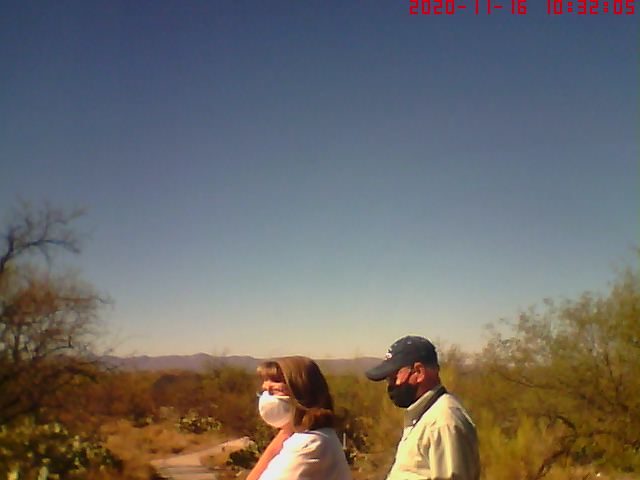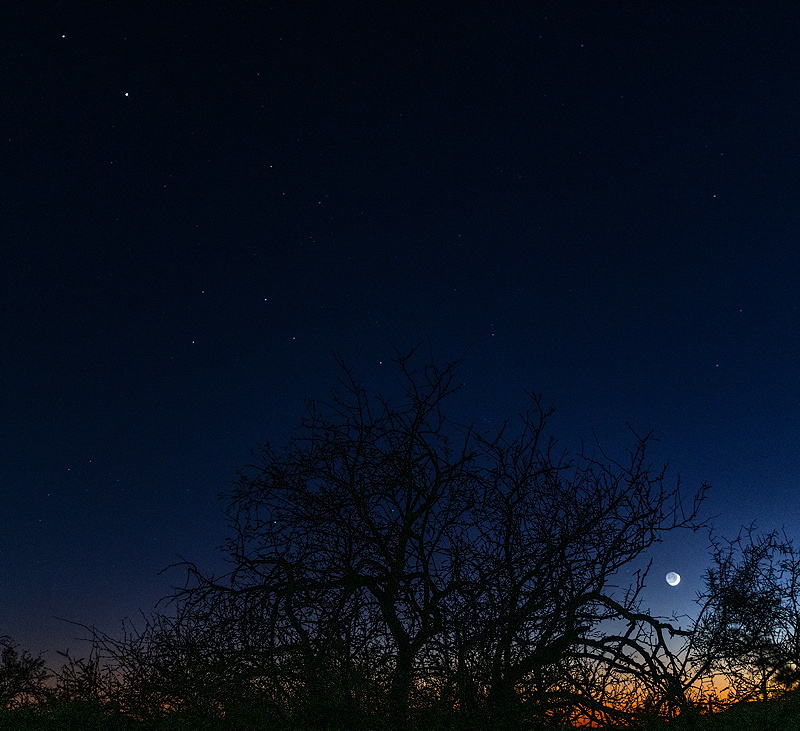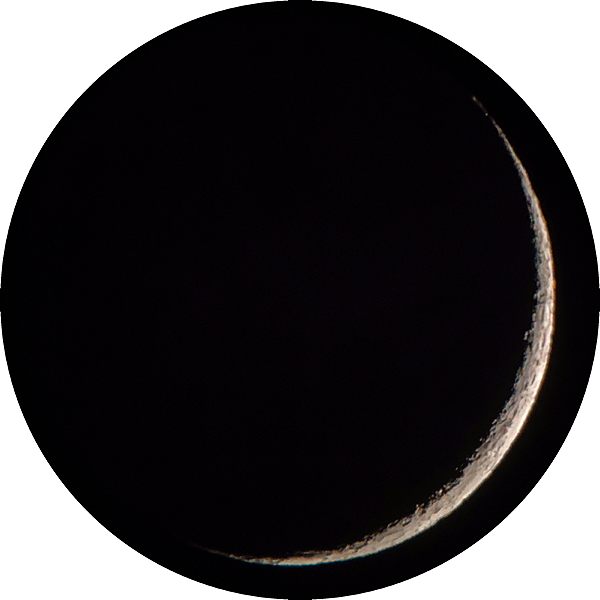Crescent Moon, Earthshine, Jupiter, and Saturn;
ISS & Crew Dragon
Posted: 17 November 2020
The sky was clear Sunday, 15 November 2020, but I skipped opening the observatory that night as Monday would be a busy day of activities. One of those activities was a visit to Cassiopeia Observatory by Richard and Denise Lighthill, La Pine Observatory, Oregon.

|
Open: Monday, 16 November 2020, 1811 MST Temperature: 78°F |
Session: 1555 Conditions: Clear |
Equipment:
12" f/8 LX600 w/StarLock
2" 24mm UWA eyepiece
2" 2X Powermate
2" 4X Powermate
Camera:
D850 DSLR
iPhone 11 Pro Max
After opening the observatory there was a nice scene with the crescent Moon and Earthshine low in the southwestern sky and the planets Jupiter and Saturn higher up.
Keep watching the two planets as they get closer and closer together in the evening sky, finally being separated by only 0.1° (a fifth of the diameter of the Full Moon) on 21 December 2020.
This is a handheld D850 DSLR photograph (f/2.8, 1/4sec, ISO 1600, FL 35mm, slightly cropped) showing the scene.

Mouseover or tap on image for labels
1820 MST: LX600 ON, StarLock OFF, High Precision OFF.
Viewed the crescent Moon and Earthshine, 102X and 81X.
Took the following handheld afocal 81X photo using the iPhone 11 Pro Max with NightCap Camera (ISO 160, 1/25sec, 1X lens).

Viewed Saturn, 102X and 203X.
1834 MST: began getting breezy.
Viewed Mars, 102X and 813X (24mm eyepiece + 2X Powermate + 4X Powermate).
1848 MST: viewed NGC253 (Sculptor Galaxy), 102X. I planned to image it again this session once it was higher in the sky. If the breezes calmed down.
1856-1912 MST: relaxed on the observatory patio bench while waiting (hoping) for the breezes to calm down. Using 12x50 binoculars I viewed M31 (Andromeda Galaxy) and its satellite galaxies M32 and M110, M33 (Triangulum Galaxy), and the Double Cluster. Also viewed Jupiter and 3 moons, and Saturn in the same field-of-view in the binoculars. Breezes were getting stronger with more frequent strong gusts.
1918 MST: watched a short pass of the International Space Station (ISS) using 12x50 binoculars. The ISS would pass close to Saturn in the sky. But there was an added treat: the SpaceX Crew Dragon spacecraft "Resilience" was easily seen in the binoculars trailing along behind the space station has it approached the ISS for docking. The Crew Dragon was much brighter than I had expected. I wish I had taken some photographs. It was cool to see two crewed spacecraft (a total of seven astronauts) in the same field-of-view in the binoculars.
The breezes were not calming down so decided to end the session.
1926 MST: LX600 OFF.
|
Close: Monday, 16 November 2020, 1940 MST Temperature: 71°F |
Session Length: 1h 29m Conditions: Clear, very breezy |
Comments are welcome using Email. Twitter users can use the button below to tweet this report to their followers. Thanks.
Cassiopeia Observatory Home Page
Copyright ©2020 Michael L. Weasner / mweasner@me.com
URL = http://www.weasner.com/co/Reports/2020/11/17/index.html
